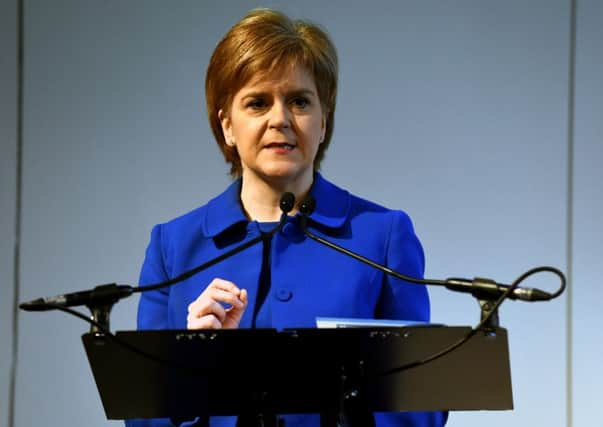Scott Macnab: Taxing times for Scotland's major parties


As Labour and the Liberal Democrats unveiled “bold” plans in the past week for across-the-board income tax rises, there were more than a few unkind mutterings on Holyrood’s lobby corridor about “electoral suicide”. It doesn’t seem an obvious way to revive either party’s ailing fortunes and win back lost support. But a common gripe among the voting public in recent years, which has been at the heart of the disaffection with modern politics, is the absence of any difference between the political parties.
“They’re all the same,” goes the cry. Well not in Scotland, not going into this Holyrood election. Both Willie Rennie and Kezia Dugdale have set out radical plans to use the current Calman Commission powers to effectively raise tax by a penny as of April and this would continue in the years ahead. When the new powers arrive next year, Labour will also introduce a new 50p top rate on high earners.
Advertisement
Hide AdAdvertisement
Hide AdBoth parties say the extra revenues would go towards Scotland’s education system, which once led the world but is struggling internationally in key areas. For both parties, something radical needs to be done to reverse their current plight after last May’s general election resulted in near-wipeout. It’s a calculated gamble that families will decide the benefit of improved public services outweighs the additional burden of paying more taxes when household budgets are so tight. But both Dugdale and Rennie surely deserve credit for showing the political leadership to make real use of the new powers coming to Scotland.
And if voters don’t fancy more tax hikes on their income, they can always look at the Scottish Tories. All the polls indicate that the party’s fortunes are on the rise under Ruth Davidson, who has ruled out any tax increases above the UK level. Indeed, last week a commission established by Ms Davidson called for tax cuts in Scotland where this is affordable, and this thinking will be pivotal in the Tories’ approach as they set out their manifesto.
But it’s Nicola Sturgeon’s position on this which really counts. With the SNP still a country mile ahead of the opposition in every poll, another Holyrood majority beckons. It means the First Minister will have carte blanche to set the tax level for working Scots as she sees fit. The SNP leader has previously indicated support for a 50p top rate. But it may be that the burden of office brings with it a hefty dose of realpolitik. There are only about 17,000 Scots - 0.7 per cent of the workforce - on the higher rate but they account for 13.9 per cent of the tax raised. A series of studies suggest this group would be more likely to move south of the Border if they were faced with a greater tax burden in Scotland. The current 45 per cent top rate is also below the current EU and OECD average, although countries like France and Germany are higher. And as the Scottish Government wages war with local councils to keep the council tax freeze, how can it then propose to raise taxes itself? And don’t forget the backlash which met John Swinney’s decision to freeze tax rates in the current budget, instead of raising them to fight asuterity. It has raised suspicions that the current impasse over the new powers coming to Holyrood, and their fiscal framework, stem from a wider reluctance of the SNP to take on these new powers.
The smart money is still on a deal being done and then Ms Sturgeon faces a real test of political mettle. Is she prepared to face the electorate, and jeopardise all that polling dominance, by campaigning on a platform to raise taxes?